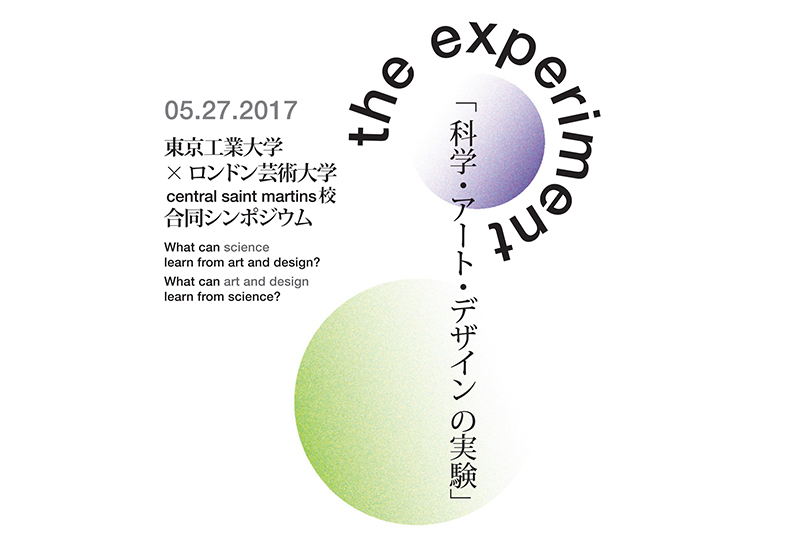This year has seen Central Saint Martins forge a new partnership with Tokyo Institute of Technology (Tokyo Tech), the foremost university of science and engineering in Japan, focused on exploring the intersections between art/design and science/technology.
The conversation began with a joint symposium titled The Experiment last May in Tokyo. At the opening of the event, Head of College Jeremy Till presented a provocation for the day:
“Normally science and art are seen as separate spheres, each with their own methods of working, thinking and doing… This is indeed how universities and school curricula are divided, with students identified as belonging to one tribe or another… As the global situation has become ever more complex and fluid, we need multiple and hybrid ways of thinking. The application of scientific logic alone is not enough, because it often overlooks the broader cultural and social context in which the issues arise. And the application of pure creativity is not enough, because it is often blind to the need for rigour and analysis. Science is not as doggedly linear as the outside world might suggest, and design is often ferociously rigorous and so confounds stereotypes of impulsive creativity. Art and science need to work together, right from the start of any project, sharing their methods and insights.”
Till’s false binary opened the conversation for the day with the challenge to make connections and resonances across the disciplines. Taking “the experiment” as a way into discussion, academics from Central Saint Martins – including Pathway Leader of MA Art and Science, Heather Barnett and Professor in Design for Sustainable Futures and Director of Design & Living Systems Lab, Carole Collet – shared their research and strategies with their Tokyo Tech counterparts as well as educators from Tokyo University of the Arts. Exploring the nature of boundaries between the arts and science, subjects were broad from robotics to biodesign.
“The presentations on both sides were diverse and the concept of ‘the experiment’ was a useful framework through which we could exchange our approaches from different perspectives… Our students come from varied backgrounds across the arts and sciences, but they are all makers and enquirers. We spend a lot of time looking at different disciplinary methodologies, not seeing art and science as binary positions, but as both fundamentally driven by human curiosity.”
Heather Barnett, Pathway Leader of MA Art and Science
The Experiment was the beginning of the long-term institutional discussion with exchanges and collaborations on the horizon. “Our driving force is to see how art and design intersect with other disciplines and cultures,” says Till of the ambitions for the institutional relationship, “there’s much more potential for us to use our design sensibilities in a collaborative manner.”
More information:

